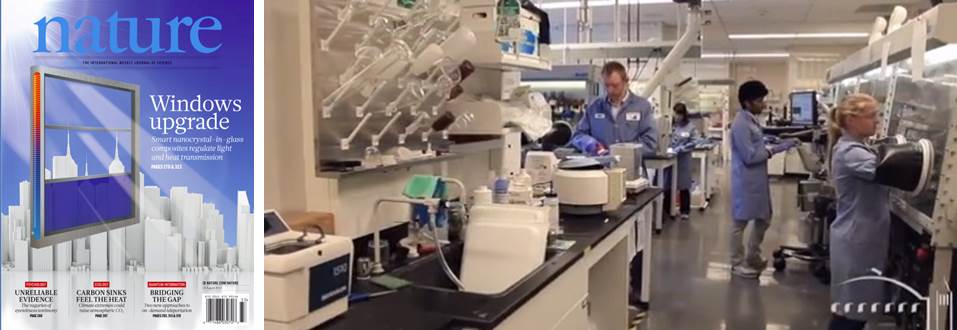Switchable Windows
In all climates and locations across the globe, the sun produces intensely variable conditions that the façade must mitigate in order to produce habitable conditions within buildings. Advances in material science have resulted in the development of durable large-area switchable coatings on glass, or films that passively vary with incident light or heat or can be modulated at whim, either manually or automatically. Material science continues to improve device properties and durability. Integrating these glazings with lighting and HVAC systems is critical for achieving energy efficiency and indoor environmental quality goals.
Switchable windows could be used to respond to the ever-changing weather and building conditions to minimize lighting and HVAC energy use, minimize peak energy loads that can affect demands on the micro- or utility grid, and address the demands of occupants in real time. The challenge has been to craft devices that are durable over the expected 30–50 year installed life and are low cost. Determining how to control devices to achieve the best balance between competing demands is also a challenge. LBNL has been investigating the design, control, energy performance, and occupant impacts of switchable windows in commercial and residential buildings over the past two decades.

Left: Cover of Nature, August 15, 2013. RIght: LBNL scientists at the Molecular Foundry have developed thin coatings of nanocrystals embedded in glass that switch in the near-infrared range for solar control without reducing daylight.



